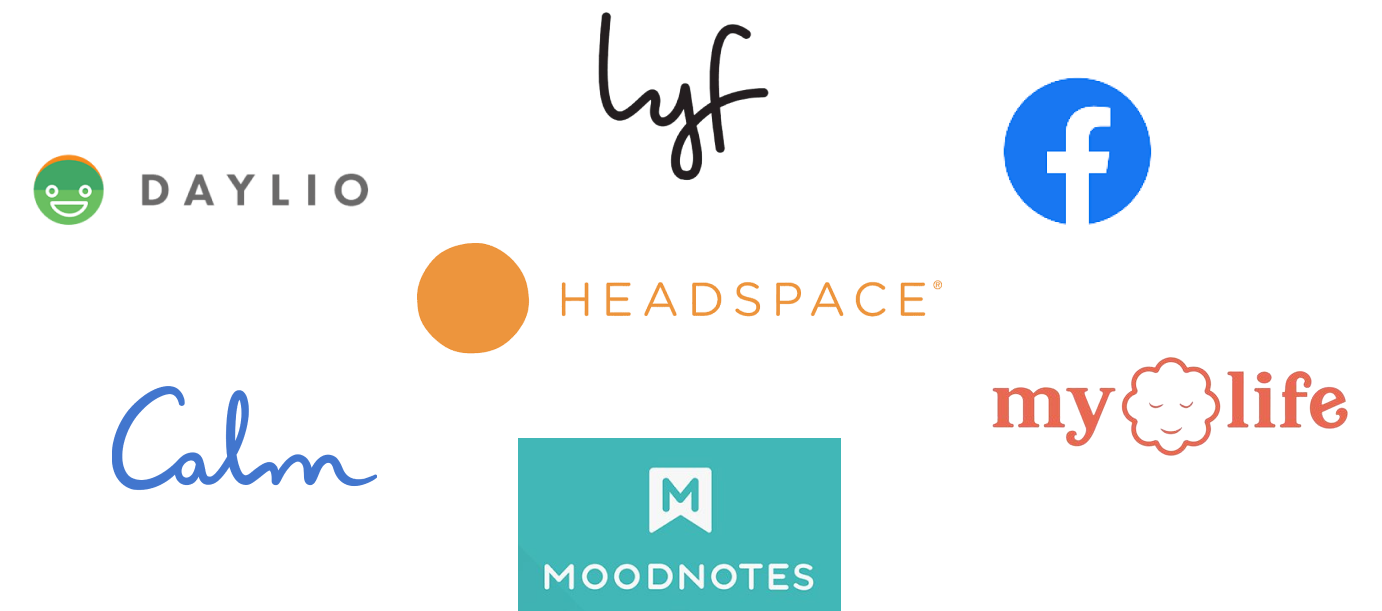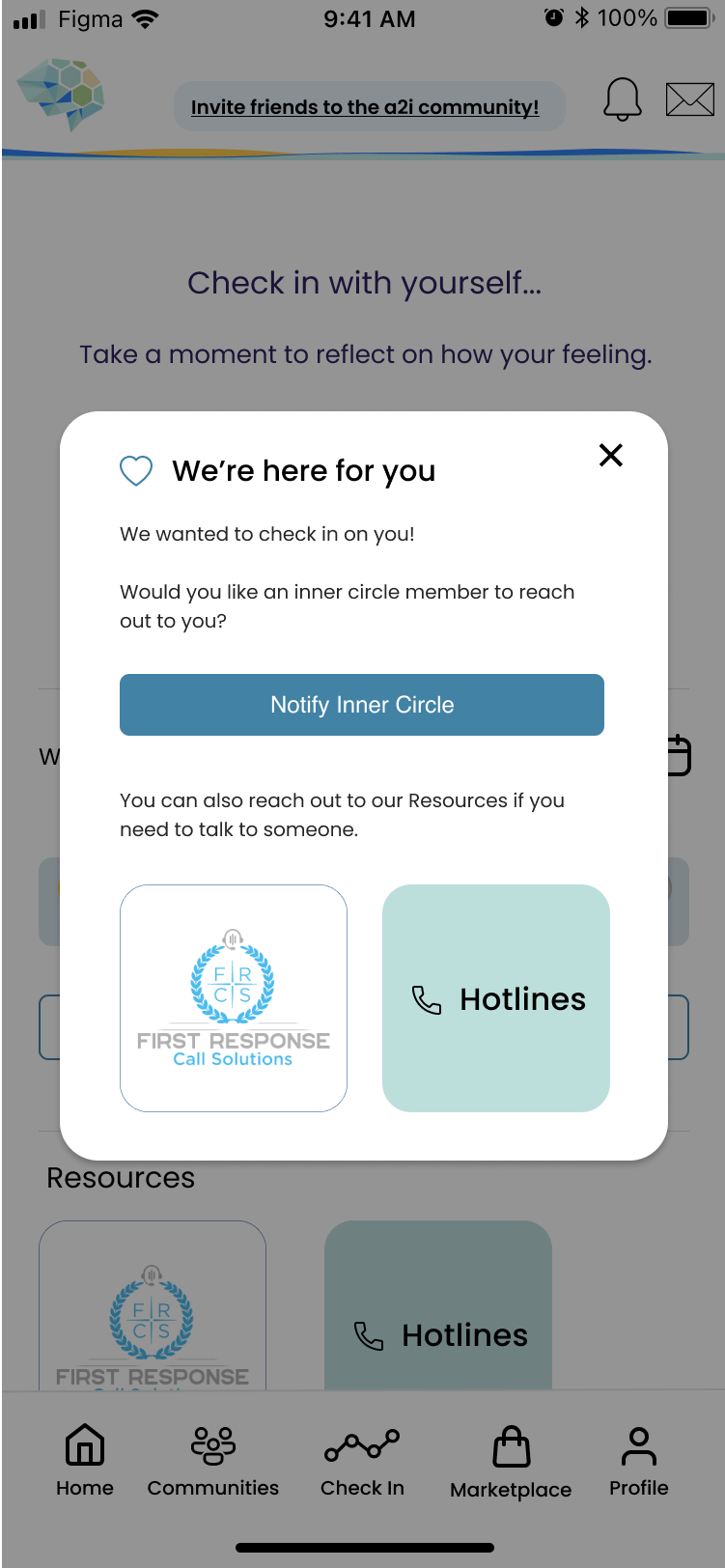
Role
UX/UI Designer
TEAM
Length
3 weeks
Prototype

Understanding the negative impact social media can have, Mindset aims to take a healthier approach by focusing on mental wellness through individual and community means.
Users can make connections with others, create posts, join communities, utilize various free and paid resources, and take control of their own mental health journey. I was tasked with creating a mood tracker for users to be able to check in with themselves and their emotional health.
Mindset was previously named a2i, so you will see the previous name on older screenshots


In it's original days, Mindset focused on the community and marketplace.

The early designs had the mood tracker incorporated as a option to add to a regular post on the app.
While we thought this may be a seamless integration, when we put it through a round of user testing, we quickly found out this was not the case.

We experimented putting the mood tracker on the landing page to prompt users when they first enter the app.
While users appreciate how quick and simple the process was, the feedback we received showed that the tracking needed to be fleshed out more.
.png)
We wanted users to find a comfortable and private space on the app for them to check in with themselves. In this iteration, the mood tracker had:
User testing showed us the following:
.png)
Collaborating with our Psychologist, we diversified the mood options for a wide range to select from. We also removed the original bar graph and replaced it with an 'at a glance' view as users appreciated the historical insight to their emotions.
From discussing as a team, we realized the following:
From our last round of user testing we learned:




After launch, we noticed a considerable increase in activity on the app. Users were making use of the new feature and we received positive feedback on how helpful it was too have multiple moods to select from, record their mood changes, to have a place to reflect on and understand their emotional health, and what steps they could take after.
We love a success story!